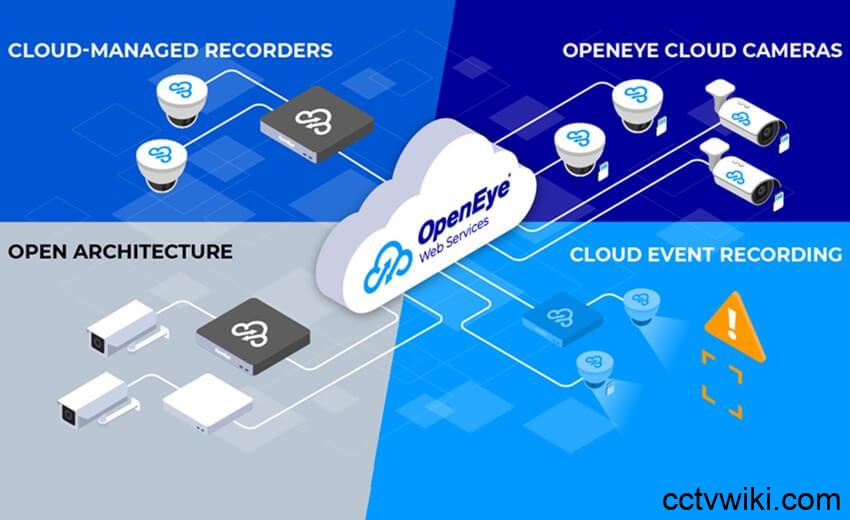While features often dominate video surveillance platform evaluations, the underlying architecture is the true determinant of a system’s ability to scale and adapt. OpenEye, an Alarm.com subsidiary, has pioneered an intelligent, cloud-managed video platform specifically designed to bridge the gaps left by traditional on-premises solutions and cloud-native newcomers.
The company strategically shifted its focus in the mid-2010s towards its own cloud-based video management system, a transition that accelerated further following its acquisition by Alarm.com in 2019.
“We offer a mature, security-focused solution aimed at simplifying scale, management, and intelligence within video surveillance,” states Angelo Salvatore, OpenEye’s Vice President of Business Development for APAC.
The Technical Edge: Federated Architecture and Hybrid Storage
Traditional Video Management Systems (VMS) and Network Video Recorders (NVR) have historically depended on on-site recording infrastructure. These systems handle all critical functions locally, from video storage to user management and analytics.
While effective on a smaller scale, this approach encounters challenges when organizations seek to standardize security across numerous facilities. Remote management becomes increasingly complex, as each unit functions as an isolated entity. This complexity impacts both dealers managing multiple client sites and customers overseeing their own multi-location operations.
OpenEye offers a unique architecture by decoupling intelligence from storage. Their system houses the “brains”—user permissions, alerts, analytics, health monitoring, and system updates—in the cloud, while video recordings remain securely on the customer’s premises.
This software architecture is “federated,” meaning multiple independent systems collaborate as a single unit, maintaining control over their individual data and processes.
For OpenEye, this translates to a single policy change instantly propagating to every site, eliminating the need for local software deployments or updates.
“A single update to the platform system affects every connected device without requiring additional infrastructure or licensing,” Salvatore explains.
With a cloud solution, managing all connected devices, users, and locations becomes streamlined through a single platform. Automatic updates provide immediate access to the latest features.
This approach lightens the IT burden by enabling recursive tasks to be performed from any location. Moreover, the ability to manage multiple locations allows businesses to scale their video security more efficiently, resulting in easier deployments.
OpenEye vs. the Competition: A Strategic Comparison
The video surveillance market is generally divided between on-premises solutions—ranging from complex VMS systems with SQL databases and distributed servers to simpler all-in-one NVRs with local recording and analytics—and cloud-native systems that move video data entirely to the cloud, often necessitating proprietary hardware.
OpenEye carves out a distinct position in this landscape. Video recordings remain locally on-premise, while only non-identifiable metadata is uploaded to the cloud for system management. Video clips can also be securely stored in centralized cloud storage, facilitating easier sharing, management, and distribution of video evidence when needed.
Importantly, all OpenEye AI and analytics are processed on-site, ensuring data privacy by avoiding cloud processing and eliminating the need for constant internet connectivity. This is a key differentiator from many cloud-native competitors.
This approach enables OpenEye to adhere to strict privacy and compliance regulations (including ISO 27001, SOC 2, NDAA, and GDPR) while ensuring centralized management.
OpenEye also provides a comprehensive range of standalone cloud cameras with full AI capabilities to compete directly in the market. These cameras feature onboard storage and cloud-based management, uploading to the cloud only upon alert triggers or events. They remain open, allowing reuse on any VMS via RTSP.
“Unlike some cloud-first competitors, OpenEye’s connectivity requirements are modest. Our appliances operate with virtually any internet connection—wired, 4G, or satellite—and require only outbound traffic on standard ports,” Salvatore adds.
“We’ve achieved considerable success in the US with multi-site retail, QSR, petroleum, and convenience stores,” Salvatore notes. The ability to centrally manage hundreds or thousands of geographically dispersed sites from a single interface maintains consistent complexity, even as deployments expand.
The OpenEye retrofit model is particularly appealing to organizations with significant investments in existing network or camera infrastructure.
“You can literally enter a brownfield site, upgrade their software or recorder, install our recorder, and take over management without removing any existing camera or network infrastructure,” Salvatore explains.
Business intelligence applications, from queue management to loss prevention, become readily available through simple cloud updates, eliminating the need to re-engineer each location.
“Even cameras that are five years old can be enhanced with modern AI features, such as searching for an individual wearing a grey shirt across multiple locations over 30 days, or utilizing business intelligence tools to optimize retail operations,” Salvatore says. This centralization delivers real-time insights at scale, without adding complexity.
Ultimately, this architectural approach is key to enabling future technologies like rapid investigations, AI, and business intelligence at scale across all sites and customers. It delivers timely and accurate information as technology advances, a capability that siloed systems would struggle to match.

